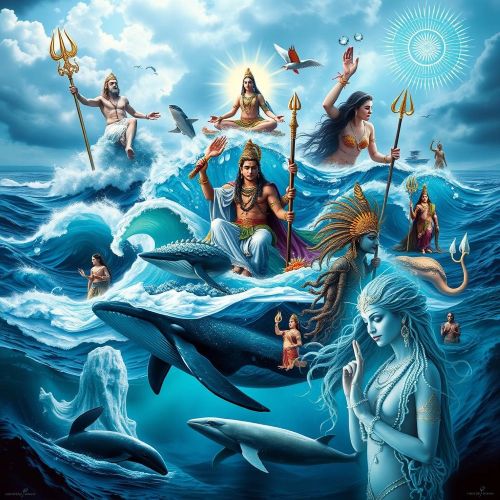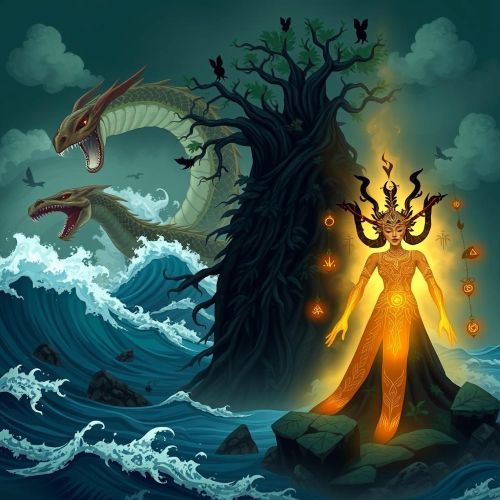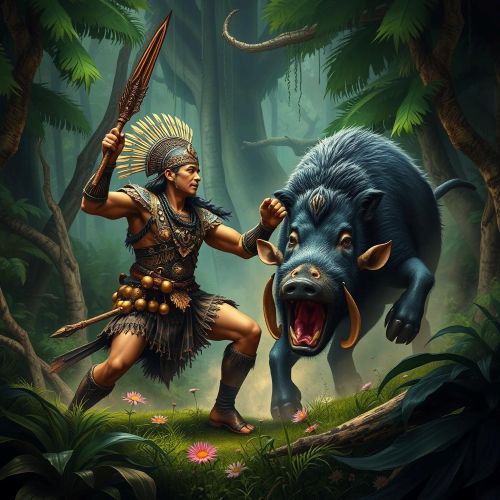10 Legendary Sea Monsters from Mythology Around the World
The oceans have always been a place of mystery, wonder, and fear. For as long as humans have set sail across open waters, stories have been told about terrifying beings lurking beneath the waves—giant creatures capable of swallowing ships, dragging sailors to their doom, or unleashing storms from the depths. These legendary sea monsters were not just figments of imagination but reflections of humanity’s relationship with the sea: respect for its power, fear of its dangers, and awe of its endless mysteries. Every culture has envisioned its own version of the sea monster, and these tales continue to inspire fascination even today. Here are ten of the most iconic sea monsters from mythology around the world.
1. Kraken (Norse Mythology) – No discussion about sea monsters is complete without mentioning the Kraken. This legendary creature of Scandinavian folklore was said to be a colossal octopus or squid so large it could wrap its tentacles around a ship and drag it beneath the waves. Sailors feared its sudden appearances in stormy waters, often interpreting whirlpools or unusual waves as the Kraken’s doing. The myth was likely inspired by sightings of giant squids, but the Kraken grew into one of the most enduring symbols of sea monster legends, appearing in books, films, and video games even today.
2. Leviathan (Hebrew Mythology) – In the Hebrew Bible, the Leviathan is a monstrous sea serpent representing chaos and destruction. Described as untamable and all-powerful, it was often seen as an adversary of order and creation itself. Unlike other sea monsters that mainly threatened sailors, Leviathan symbolized something larger: the overwhelming forces of nature and evil. Its legend has endured across centuries, and the term “Leviathan” is still used today to describe anything massive and unstoppable, from corporations to natural disasters.
3. Charybdis (Greek Mythology) – Among the most dreaded dangers faced by Odysseus in Homer’s Odyssey was Charybdis, a monstrous whirlpool that sucked down entire ships. Ancient sailors often explained unpredictable tidal patterns or violent whirlpools as the work of this sea monster. Charybdis was often paired with another creature, Scylla, creating a deadly passage where avoiding one meant encountering the other. This gave rise to the famous phrase “between Scylla and Charybdis,” meaning to be trapped between two impossible choices.
4. Scylla (Greek Mythology) – Scylla, Charybdis’s counterpart, was once a beautiful nymph cursed into becoming a sea monster with multiple heads and serpentine features. She lurked on rocky cliffs, snatching sailors who strayed too close. Together with Charybdis, Scylla represented the perils of navigating treacherous waters. More than just a monster, Scylla’s story carries a tragic undertone, reminding us how myths often blended horror with human emotion.
5. Umibōzu (Japanese Folklore) – Japan’s coastal communities told chilling stories of the Umibōzu, a shadowy giant that emerged from the sea on calm nights to capsize ships. Sailors believed that disrespecting the ocean or breaking certain taboos could summon this sea monster. Often depicted as a dark, humanlike figure rising from the waves, the Umibōzu embodied the idea that the sea itself was alive and could turn hostile without warning.
6. Makara (Hindu Mythology) – The Makara is a unique sea monster that stands apart from most destructive ocean creatures. Often portrayed as part crocodile, part elephant, and part fish, it served as the vehicle (vahana) of deities like the river goddess Ganga and the sea god Varuna. While still fierce in appearance, the Makara was a protector and guardian of waterways. In Indian art and temple architecture, Makara motifs are common, symbolizing both the mystery and fertility of water.
7. Jörmungandr (Norse Mythology) – Known as the Midgard Serpent, Jörmungandr was one of the most fearsome sea monsters in Norse cosmology. So massive that it encircled the entire world and grasped its own tail, Jörmungandr was prophesied to release its grip during Ragnarök, the end of the world. When that time came, it was destined to fight Thor in a battle that would destroy them both. Jörmungandr represents the ultimate embodiment of the sea monster—vast, cosmic, and tied to the very fate of the world.
8. Aspidochelone (Medieval Bestiaries) – In medieval European legends, the Aspidochelone was a gargantuan sea monster often mistaken for an island. Sailors who landed on its back to rest or light fires would soon find the creature diving beneath the waves, dragging them to their deaths. This tale served as both a warning about the deceptive nature of the ocean and a symbolic lesson about misplaced trust.
9. Kāmohoaliʻi (Hawaiian Mythology) – In Hawaiian traditions, sharks were considered sacred, and Kāmohoaliʻi was a shark god often associated with guidance and protection. However, he could also be a dangerous sea monster to those who disrespected the ocean. Kāmohoaliʻi could take human form, guiding voyagers across treacherous waters, or appear as a giant shark to punish the reckless. His dual nature as both protector and predator reflected the Hawaiian view of the sea as both life-giving and deadly.
10. Cetus (Greek Mythology) – Cetus was the sea monster sent by Poseidon to punish Queen Cassiopeia by devouring her daughter Andromeda. In most depictions, Cetus appeared as a massive whale or serpentine creature. Andromeda’s rescue by the hero Perseus became one of the most famous Greek myths, but Cetus remains significant as a classic sea monster embodying divine wrath and oceanic power.
Across cultures and centuries, sea monsters reflect the same human emotions—fear of the unknown, respect for nature’s power, and fascination with the mysteries of the deep. Whether terrifying destroyers like Leviathan and the Kraken, deceptive creatures like Aspidochelone, or protective beings like Makara and Kāmohoaliʻi, these sea monsters embody humanity’s timeless relationship with the ocean. The myths live on today, reminding us that even in our age of satellites and submarines, the sea still holds secrets—and the legends of sea monsters continue to stir both fear and wonder.
No posts were found.









